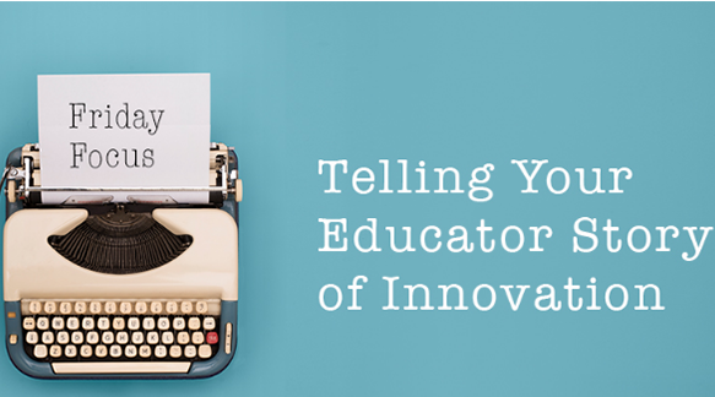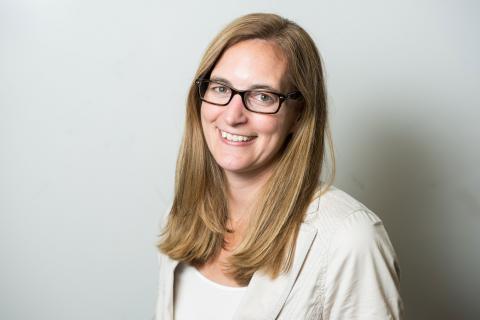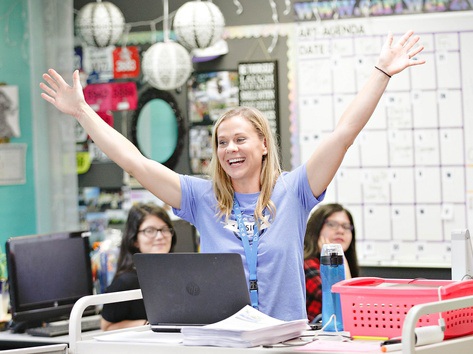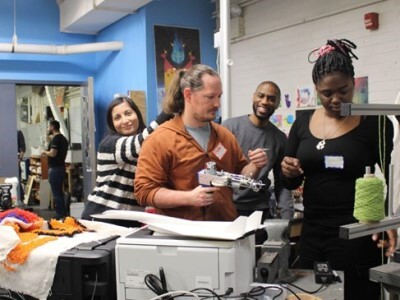Building Community
Finding and Telling Your Educator Story of Innovation
Topics

When educators design and create new schools, and live next gen learning themselves, they take the lead in growing next gen learning across the nation. Other educators don’t simply follow and adopt; next gen learning depends on personal and community agency—the will to own the change, fueled by the desire to learn from and with others. Networks and policy play important roles in enabling grassroots approaches to change.
Practitioner's Guide to Next Gen Learning
Sharing stories of innovation, progress, even failure can be an impactful way for educators to rally the support of their community & inspire others to redesign schools.
In this week’s Friday Focus: Practitioner’s Guide to Next Gen Learning, we switch from looking into the classroom to looking out from the classroom. Sharing stories of innovation, progress, and sometimes even failure can be an impactful way for educators to rally the support of their community and inspire others to redesign schools. This week we look at why stories are powerful and how educators can find and tell their own.
“I grew up in Bryan College Station, Texas, and came to Hawai’i when I was 19. This place had a profound impact on me. It really expanded my horizons and my ability to see the world through multiple perspectives. Whereas, I feel the K-12 education I received was really trying to push me to be something I wasn’t necessarily, it wasn’t who I was. It gave me a pretty singular story of history, of context, of content. But coming to the islands, which still has a very strong indigenous culture, really provided an opening to say, there are many stories, and many of them are right. It allowed me a space to live, instead of a binary system, to have nuance or gray.”
This story is from Assessment for Learning Project grantee, Jessica Worchel. Jessica is the Nā Hopena A‘o Special Projects Manager at the Office of Hawaiian Education at the Hawaii State Department of Education, and in this one paragraph, she demonstrates the many powers of great stories. Stories can be effective communication tools, engaging lessons, and opportunities to open audiences to new ideas.
In the work of reimagining learning, all educators are bound to have stories to share. Yet, when it comes to telling the full story of how a school, district, or organization is leading change, there’s so much going on that it’s hard to know which story to tell. Another challenge comes when we emphasize data, a vision, or specific practices because they only tell part of the story, and, frankly, can be pretty dry and lack the emotional, engaging aspects of a full narrative. Despite those difficulties, discovering the true story that resonates with your community and telling it in a way that can inspire others is possible. As Heather Wolpert-Gawron writes in Edutopia, “There’s a power in collecting and curating those stories that help define our school site and our students.”
Using Stories to Inspire
Part of what makes storytelling so powerful is that it is universal. The art of weaving a tale is found in every culture and country—from Chinese shadow puppetry to the Indian dance Bharatanatyam to the Humans of New York series in the United States (and the multiple similar projects it has inspired around the world)—stories communicate ideas and connect people. These stories are an incredible part of our evolution as humans, so much so that humans do not simply hear stories, we feel them. According to this article from Greater Good Science Center by Jeremy Adam Smith, stories create a neurochemical reaction in our bodies, producing cortisone and oxytocin.
For educators, using stories to inspire students, parents, community leaders, or even other educators can be an important part of leading innovation. Think of memorable stories in your own life. It could be a funny joke a friend told. Or perhaps a commercial like Nike’s Find Your Greatness campaign. Even viral videos like Kid President are powerful because they inspire us.
We mentioned Jessica Worchel earlier and the impact she felt when her own story intersected with that of Hawai’i’s. As part of her role in the Hawai’i State Department of Education Jessica and her team at the Office of Hawaiian Education are working to infuse storytelling as a way of communicating and learning in local districts. The districts are doing this by embracing Nā Hopena A‘o or HĀ, which are six outcomes to be strengthened in among all students and staff, and across the system: belonging, responsibility, excellence, aloha, total well-being, and Hawai’i; together, these outcomes form the acronym BREATH. You can learn more about the role of storytelling in Hawai’i’s Assessment for Learning Project on their grantee page.
“During our presentations, we talk about having BREATH... But if we were in [my home state of] Texas it would be BREATT, you just change the H to the place that you are, and that place has its own story,” commented Jessica.
Through HĀ, districts are enabling students, staff, community, and families to find their voice and create opportunities for students to succeed by asking questions, such as, “How do you then dig into the people of that place and tell that story…who are these kids? What are their stories? What are their backgrounds? What are they good at? What inspires them? Who are their families? And you create the learning context and content around those stories,” says Jessica.

Part of what makes HĀ so powerful is its authentic connection to students, to Hawaiian culture, and to Hawai’i the place. That’s an important lesson related to storytelling about innovation in the classroom. A story should resonate with a community in a way that makes them want to be part of the change and take ownership in it.
How to Create a Great Story
Your story will be your own, but there are a few common elements that comprise all great stories. This infographic from DR4WARD offers some ideas to get started and we’ve included some other suggestions and resources below as well.
Know Your Ending
When it comes to creating a story, an effective approach is to think about it like backwards lesson planning. Start with the end in mind. One approach to try is the Think, Feel, Do exercise.

This exercise challenges educators to identify the final outcome of their story by considering:
- Three things they want their audience to think about their district, organization, or next gen learning initiative
- Two things they want the audience to feel after hearing the story
- One thing they want the audience to do
Know Your Audience
Every good story has a protagonist, a lead character who connects with the audience. In stories of reimagining education, thinking of the audience as your protagonist can help make the important connections you want with your community. Doing that effectively takes knowing your audience.
The Students at the Center Hub stays in touch with its audience regularly to ensure they are always framing the organization’s story around the needs of its audience. The process started when Jobs for the Future—in collaboration with the Nellie Mae Education Foundation—worked to reimagine a web presence for student-centered learning.
“We looked for feedback about what this space should look like. We conducted focus groups and surveys to gauge the interests and needs of the groups we were trying to reach. Then we built custom landing pages [on our website] that connected to specific campaigns for students, parents, and educators so when someone visited a landing page and then navigated to the main site we could see who among our audience was finding the information useful,” says Keesa McKoy, Digital Content and Outreach Manager at Students at Jobs for the Future.
See how Students at the Center Hub at Jobs for the Future tells the story of student-centered learning from the perspective of a student. This is a great example of a protagonist-driven story that helps us, the audience, better connect with different elements of competency-based education.
The team at Students at the Center Hub at Jobs for the Future continue to stay in touch with that community through social media, like a private Facebook group, and one-on-one meetings at conferences.
Additional Storytelling Resources
As you build and tell your story, here are some other resources that can help you connect and inspire your audiences:
- A Changemaker’s Guide to Storytelling – Ashoka identifies four types of stories and eight steps to creating a story that sticks.
- DigiTales: The Art of Digital Storytelling – Curated by Bernajean Porter, this list of books and articles can help foster anyone’s inner storyteller.
- Communications Planning for Innovation – Education Elements and The Learning Accelerator put together this tactical guide about how to communicate specifically about blended and personalized learning initiatives.
- Building Support for Student-Centered Learning: A Toolkit – The Students at the Center Hub at Jobs for the Future produced this toolkit to provide educators with the strategies and resources to build public will and ensure a broad group of stakeholders engage in the change process.
The team and I would like to extend special thanks to Kavitha Thimmaiah of Communications Strategy Group for her help in putting together this edition.





